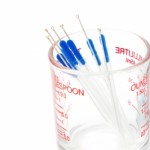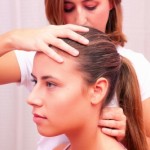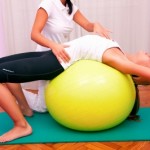
The efficacy of conducting heat through a needle, to alleviate post-needling soreness
Myofascial pain syndrome is often seen in clinical practice as a cause for pain. It is characterized as a dull ache to a burning pain that can cause referral of pain to other areas of the body (Travell and Simons, 1999). One method used to treat this, is by dry-needling therapy (DNT). DNT has proved to be effective in treatment of myofascial pain, but it has shown to cause post needling soreness. This soreness discourages many patients from receiving further dry-needling or treatment (Kamanli et al. 2005).
Ways to help alleviate this post-soreness have been mentioned such as heat, stretching, ultrasound and application of pressure (Fleckenstein et al. 2010). All these modalities are done after the needle has been removed. This then adds an extra modality to the treatment as well as increased treatment time; therefore these modalities are often skipped by practitioners (Hong, 1994). Another factor to look at is that many of these modalities have not been researched objectively for effectiveness on relieving the post-needling soreness (Kamanli et al. 2005).
Using a moxi cigar, placed on top of the acupuncture needle whilst inserted into the active trigger point is a way in which heat as a modality to treat post-needling soreness can be combined into the needling time. Doing this study would also objectively research if there are benefits to this added modality and its effectiveness on alleviating post-needling soreness.
The aim of the study is to investigate if heat conduction using a moxi cigar is an effective modality in alleviating post-needling soreness when treating myofascial pain syndrome with DNT.
The trial will be comprised of 90 participants divided randomly into three equal groups. Group A will receive DNT of active trigger point 1 of the trapezius muscle only. Group B will receive DNT of active trigger point 1 of the trapezius muscle, with the addition of the burning Moxi cigar to conduct heat through the acupuncture needle to the trigger point. Group C will receive DNT of active trigger point 1 of the trapezius muscle, followed by 5 minutes of ultrasound therapy over the acupoint.
Each participant will be treated once with readings being recorded before treatment as well as immediately after, then again after a seven minute break. They will be asked to come in 24 hours post treatment to obtain the last readings as well as to complete a pain diary prior to the last 24 hour measurement.
Subjective data will be in the form of a numerical pain scale questionnaire and a pain diary. Objective data will be CROM and algometer readings. Subjective data will be obtained prior to treatment, in the numerical pain scale questionaire and then again 24 hours after treatment. The pain diary will be a recording of pain at four time points (4hrs, 8hrs, 12 hrs and 24hrs) starting immediately after treatment. Objective data will be taken prior to treatment, immediately post treatment then again after a 7 minute interval post treatment. After 24 hours participants will need to return for a final pain scale questionnaire and for algometer and CROM readings.
Data collected by the researcher was analysed with the help of a statistician. After consultation with STATKON at the University of Johannesburg’s, Auckland park campus, it was concluded that results would be analysed using Shapiro-Wilk test for normality and Levene’s test for equal variances. For all objective data collected, normality and equal variances were present. This added to the group size lead to conclude that parametric testing would be used on objective data. The parametric tests used were: One way Anova and Post Hoc test. For subjective data normality and equal variances were not present and thus non-parametric testing was used on subjective data namely: Kruskal Wallis, Wilcoxon-signed rank and Mann-Whitney U test.
Based on these results clinically the study showed that dry needling with the addition of ultrasound or moxibustion, as a treatment for post-needling soreness did appear to have better results. The use of these two added modalities did ease post-needling soreness which for many patients is the reason they don’t wish to receive further dry-needling treatment. When using moxibustion the post-needling soreness is eased. This added treatment can be used during the dry needling and does not require additional treatment time for the practitioner or for the patient. To conclude, the efficacy of using a moxibustion to alleviate post-needling soreness has been seen clinically. This treatment can be used with minimal addition treatment time and should be used in clinical practice.






